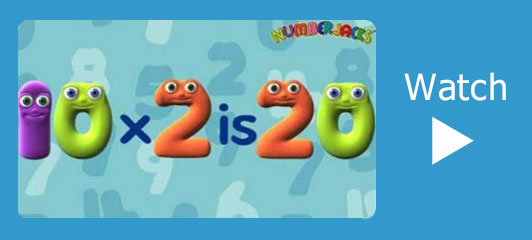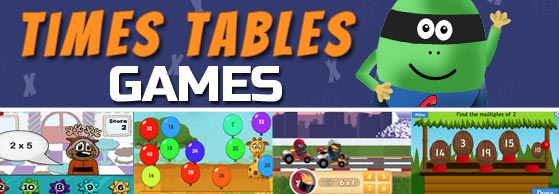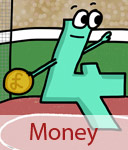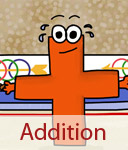
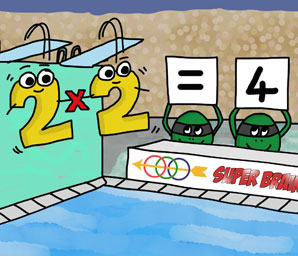
Times Tables games & worksheets
Times tables for kids learning primary school maths. Learn how to count and caluculate your times tables with videos, games and worksheets.Maths homework help for KS1 & KS2.
Pick a times table
Learning the times tables tips:
- Learn how to count first
- Learn the sums in order
- Learn the sums mixed up
- Increase your speed
What should my child know at each level?
It is now part of the curriculum that every child will be expected to know their times tables before leaving primary school at the age of 11. For some, this comes easily but for others, it can be a struggle. Knowing what is expected from your child at any year will help you support them in their learning.
What the curriculum says:
Year 1 - Be able to count in 2's, 5's and 10's. Know doubles and halves to 10.
Year 2 - 2 times tables, 5 times tables and 10 times tables.
Year 3 - 3 times tables, 4 times tables and 8 times tables.
Year 4 - 6 times tables, 7 times tables, 9 times tables, 11 times tables and 12 times tables.
Year 5 - All times tables.
Year 6 - All times tables.
This seems a lot to learn once you reach Year 4, but from the beginning of Year 4, your child has a full 3 years to get to grips with all of the times tables. If you feel this is a lot for your child you could try the following in order listed.
Super Brainy Beans alternative:
Year 1 - Be able to count in 2's, 5's and 10's. Know doubles and halves to 10.
Year 2 - 10 times tables, 2 times tables and 5 times tables.
Year 3 - 11 times tables, 9 times tables, 3 times tables, 4 times tables.
Year 4 - 6 times tables, 8 times tables.
Year 5 - 7 times tables, 12 times tables.
Year 6 - All times tables.
Tips for parents teaching their child the times tables
Teaching times tables doesn’t have to be stressful. With the right approach, it can be fun and effective! Here are some easy tips to help your child learn.
Use visuals and hands-on tools. A colourful multiplication chart can help your child see the numbers clearly. You can also use objects like blocks, buttons, or coins to show how multiplication works in a physical way.
Make it fun with games. Play “Times Table Bingo” or use flashcards for quick practice. The games on this website can also be great for keeping your child interested. Singing songs or rhymes for the times tables can make them easier to remember too.
Practice a little every day. Short, daily sessions work better than long ones. Look for ways to include times tables in everyday activities, like cooking or shopping. For example, “If each bag has 3 apples, how many apples are in 4 bags?”
Look for patterns. Show your child how times tables work in predictable ways, like how the 5s table alternates between numbers ending in 5 and 0. Explain that multiplication is reversible, so if they know 3 × 4, they also know 4 × 3.
Set small goals. Focus on one table at a time, and celebrate when your child masters it. Encouragement and patience are key—don’t pressure them or get frustrated. Praise their effort, even when they make mistakes, to keep their confidence up.

